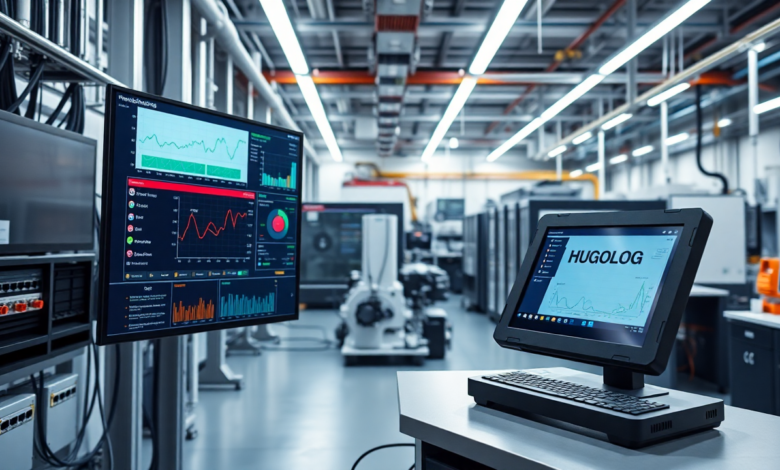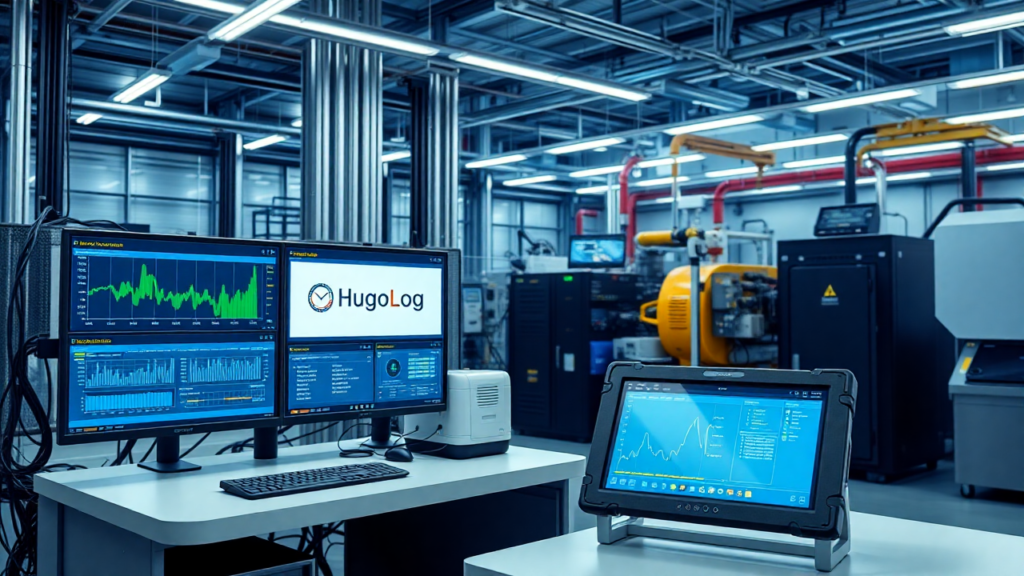How to Link Hugolog With IPC Terminal A Complete Guide

Introduction
Integrating data logging systems like How to Link Hugolog With IPC Terminal with an Industrial Process Control (IPC) terminal is crucial for achieving operational efficiency, real-time monitoring, and centralized data management in industrial settings. By connecting these systems, organizations can streamline workflows, reduce downtime, and improve decision-making capabilities.
This guide provides a detailed, step-by-step explanation of how to link How to Link Hugolog IPC Terminal, covering prerequisites, setup processes, troubleshooting, and the benefits of integration.
What Is How to Link Hugolog With IPC Terminal?
HugoLog is a cutting-edge data logging and monitoring system designed for industrial applications. It collects and stores data from multiple sources, offering detailed insights through real-time reporting and analytics.
Key Features of HugoLog
- Real-Time Monitoring: Tracks data as it is generated, offering instant visibility into processes.
- Data Storage: Stores large volumes of data for historical analysis and trend monitoring.
- Automation: Automates reporting and alert systems, reducing the need for manual input.
- Compatibility: Supports integration with multiple devices, including IPC terminals, using standard communication protocols like Modbus TCP/IP, OPC UA, and MQTT.
What Is an IPC Terminal?
An Industrial Process Control (IPC) terminal is a robust interface used to manage, monitor, and control industrial operations. How to Link Hugolog With IPC Terminal combine hardware and software to centralize data and streamline process control.
Common Applications of IPC Terminals
- Monitoring machine operations and sensor data
- Managing alarms and system notifications
- Configuring and controlling industrial workflows
- Displaying real-time analytics and reports
Why Integrate How to Link Hugolog With IPC Terminal?
The integration of HugoLog with an IPC terminal unlocks numerous advantages, making it a vital step for modern industrial operations.
Benefits of Integration
- Centralized Data Visualization: Combine data from various sensors and systems into a single interface.
- Improved Decision-Making: Access actionable insights and analytics to optimize operations.
- Real-Time Alerts: Receive instant notifications for abnormal conditions or system failures.
- Reduced Downtime: Monitor equipment performance to prevent unplanned downtime.
Prerequisites for Linking HugoLog with an IPC Terminal
Before diving into the integration process, ensure the following requirements are met:
1. Compatibility Check
Verify that the How to Link Hugolog With IPC Terminal version you are using supports integration with the specific IPC terminal model. Check the manufacturer’s technical documentation or contact their support team if needed.
2. Network Configuration
Ensure that both HugoLog and the IPC terminal are connected to the same network (wired or wireless). Proper network configuration ensures seamless communication between the two systems.
3. Software and Firmware Updates
Update both HugoLog and the IPC terminal to the latest software versions to avoid compatibility issues and ensure access to the newest features.
4. Communication Protocols
Identify and activate a communication protocol supported by both systems. Common protocols include:
- Modbus TCP/IP
- MQTT
- OPC UA
5. Administrative Access
Obtain admin credentials for both systems to configure settings and establish a secure connection.
Also read: Sayuri 0427 Predatorrat
Step-by-Step Guide to Link HugoLog with an IPC Terminal
Step 1: Configure the Network
For Wired Connections
- Connect both How to Link Hugolog With IPC Terminal to the same router or network switch using Ethernet cables.
- Assign static IP addresses to both devices to prevent changes caused by DHCP.
For Wireless Connections
- Ensure both devices are connected to the same Wi-Fi network.
- Confirm signal strength and minimize interference to maintain a stable connection.
Step 2: Enable Communication Protocols
On HugoLog
- Log in to HugoLog and navigate to Settings > Connectivity.
- Select the communication protocol you intend to use, such as Modbus TCP/IP or MQTT.
- Save the settings and ensure the protocol is active.
On the IPC Terminal
- Access the IPC terminal’s configuration menu, typically under System Settings or Communication Settings.
- Enable the same protocol activated in HugoLog.
- Configure the network settings to match HugoLog’s IP address and port configuration.
Step 3: Establish API Integration
HugoLog supports API integration for seamless data transfer to external systems like IPC terminals.
Generate an API Key in HugoLog
- Navigate to Settings > API Management in How to Link Hugolog With IPC Terminal.
- Generate a new API key, which acts as an authentication token for secure communication.
- Save the API key in a secure location.
Configure the API on the IPC Terminal
- Go to System Integration > API Settings on the IPC terminal.
- Enter the API key generated from HugoLog.
- Specify the endpoint URL or IP address for HugoLog’s API.
Step 4: Map Data Points
To display HugoLog data on the IPC terminal, you’ll need to map data points.
- Identify the data streams in HugoLog (e.g., temperature, pressure, equipment status).
- Use the mapping tools provided in the IPC terminal’s interface to link these streams to corresponding visualization elements, such as graphs or dashboards.
Step 5: Test the Connection
Perform a Test Run
- Simulate data collection in HugoLog by running a test operation.
- Verify that the data is displayed accurately and in real-time on the IPC terminal.
Troubleshoot Common Issues
- No Data Displayed: Check protocol configurations and network connectivity.
- Delayed Data: Ensure the network is stable and bandwidth is sufficient.
- Error Messages: Cross-check the API settings for authentication errors.
Step 6: Secure the Connection
Security is paramount when linking How to Link Hugolog With IPC Terminal to prevent unauthorized access and data breaches.
- Enable Encryption: Activate TLS/SSL encryption for secure data exchange.
- Implement Firewalls: Restrict access to authorized IP addresses.
- Update Passwords: Use strong, unique passwords for both systems.
- Monitor Logs: Regularly review system logs for unusual activity.
Step 7: Automate Reporting and Notifications
- In HugoLog, configure scheduled reports to send data to the IPC terminal at predefined intervals (e.g., hourly, daily).
- Set up real-time alerts in both systems to notify operators of abnormal conditions.

Troubleshooting Common Problems
Issue 1: No Data Flow Between Systems
- Verify that both devices are connected to the same network.
- Check the communication protocol settings for mismatches.
- Restart both devices to reset their connection.
Issue 2: Incorrect or Missing Data Display
- Confirm that data points are correctly mapped.
- Ensure the How to Link Hugolog With IPC Terminal is functioning correctly and hasn’t expired.
- Update both systems to their latest versions.
Issue 3: Connection Drops Frequently
- Assign static IP addresses to prevent dynamic changes.
- Check for interference or hardware issues in the network setup.
Advanced Tips for Optimal Integration
Use a Dedicated Server
For large-scale operations, consider hosting HugoLog on a dedicated server for enhanced performance and reliability.
Leverage Cloud Integration
If both systems support cloud-based services, integrate them via a cloud platform for remote monitoring and data access.
Implement Redundancy
Set up backup systems to ensure data availability during unexpected failures or downtime.
The Benefits of Linking How to Link Hugolog With IPC Terminal
The integration of HugoLog with an IPC terminal offers a plethora of advantages, making it a game-changer for industrial processes.
Enhanced Data Visibility
Real-time monitoring and centralized data visualization provide a comprehensive view of operations, allowing operators to identify inefficiencies and optimize processes.
Improved Productivity
By automating reporting, alerts, and analytics, How to Link Hugolog With IPC Terminal operators can focus on strategic tasks rather than routine data management.
Cost Savings
Proactive monitoring reduces downtime, minimizes maintenance costs, and prevents operational disruptions.
Scalability
The flexibility of HugoLog and IPC terminals ensures they can accommodate growing industrial needs, from adding new sensors to expanding operations across multiple locations.
Conclusion
Linking How to Link Hugolog With IPC Terminal is a strategic move that enhances process control, optimizes data management, and improves decision-making in industrial settings. By following the steps outlined in this guide—configuring the network, enabling protocols, mapping data points, and securing the connection—you can establish a seamless integration between these two systems.
This integration not only simplifies operational workflows but also empowers organizations to stay ahead in a competitive, data-driven world. With the right setup, HugoLog and IPC terminals can revolutionize your industrial processes, unlocking new levels of efficiency and innovation.





